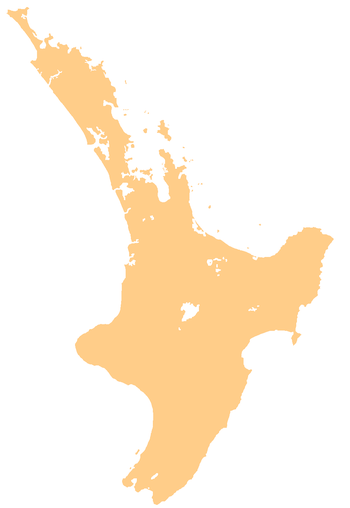Hokowhitu Lagoon
| Hokowhitu Lagoon | |
|---|---|
| Centennial Lagoon | |
 Hokowhitu Lagoon Location of Hokowhitu Lagoon within the North Island | |
| Coordinates | 40°22′2.42″S 175°37′44.22″E / 40.3673389°S 175.6289500°ECoordinates: 40°22′2.42″S 175°37′44.22″E / 40.3673389°S 175.6289500°E |
| Type | Oxbow lake |
| Primary inflows | Artesian Bore |
| Primary outflows | Earthquake-produced drainage from unknown source |
| Catchment area | 2.7 km2 (1.0 sq mi) |
| Max. length | ~1.06 km (0.66 mi) |
| Max. width | ~70 m (230 ft) |
| Average depth | 2.2 m (7.2 ft) (as of 2009)[1] |
| Settlements | Palmerston North |
Hokowhitu Lagoon, also sometimes called Centennial Lagoon, is a natural ox-bow lake in the city of Palmerston North, New Zealand. Hokowhitu was created from a meander of the Manawatu River. Many features surround the lagoon including a walkway, a Massey University campus and the Caccia Birch House. Hokowhitu Lagoon is also the name of a residential area within Palmerston North.
An artesian bore, which was completed in 2009, is drilled 94 metres (308 ft) into an underground aquifer which supplies the lagoon with 250,000 litres of water daily.[2]
Features
Hokowhitu Lagoon is home to many water-life and birds. Perch is the most common fish in the lagoon, with 44 fish per 100m2.[1]
A 1.1 kilometres (0.68 mi) walk follows the shore of the lagoon and is popular with local leisure seekers.[3] The walk includes a truss bridge which crosses the lagoon at roughly its halfway mark.
The Caccia Birch House, a Category I Historic location, sits on the northern side of the lagoon. The house was built in 1892 and was donated to the government in 1941.
Diminishing water levels
During 2014 the lagoon's water levels dropped as the 2014 Eketahuna earthquake opened up channels in the underside of the lake.[4] The leaking continued and in December 2014 environmentally-safe dye was put into the water to help locate leaks.[5] The Artesian Bore, which was built in 2009,[2] cannot compete with the heavy leaking.
During mid-2016 a dive team was sent to investigate the lagoon bed to locate a source of the leaking.[6]
See also
References
- 1 2 "Pest fish survey of Hokowhitu (Centennial) Lagoon, Palmerston North" (PDF). Doc.govt.nz. Retrieved 2016-07-24.
- 1 2 "Lagoon Bore will Sustain Water Level". Pncc.govt.nz. Archived from the original on 2014-08-13. Retrieved 2016-07-24.
- ↑ "Hokowhitu Lagoon Walk". Pncc.govt.nz. 2016-06-09. Archived from the original on 2016-08-06. Retrieved 2016-07-24.
- ↑ Iain Scott (2014-03-14). "Hokowhitu Lagoon a drain on polo training". Stuff.co.nz. Retrieved 2016-07-24.
- ↑ "Hokowhitu blue lagoon after a leak". Stuff.co.nz. 2014-12-04. Retrieved 2016-07-24.
- ↑ "Divers checking lagoon bottom for leaks". Stuff.co.nz. 2016-06-09. Retrieved 2016-07-24.